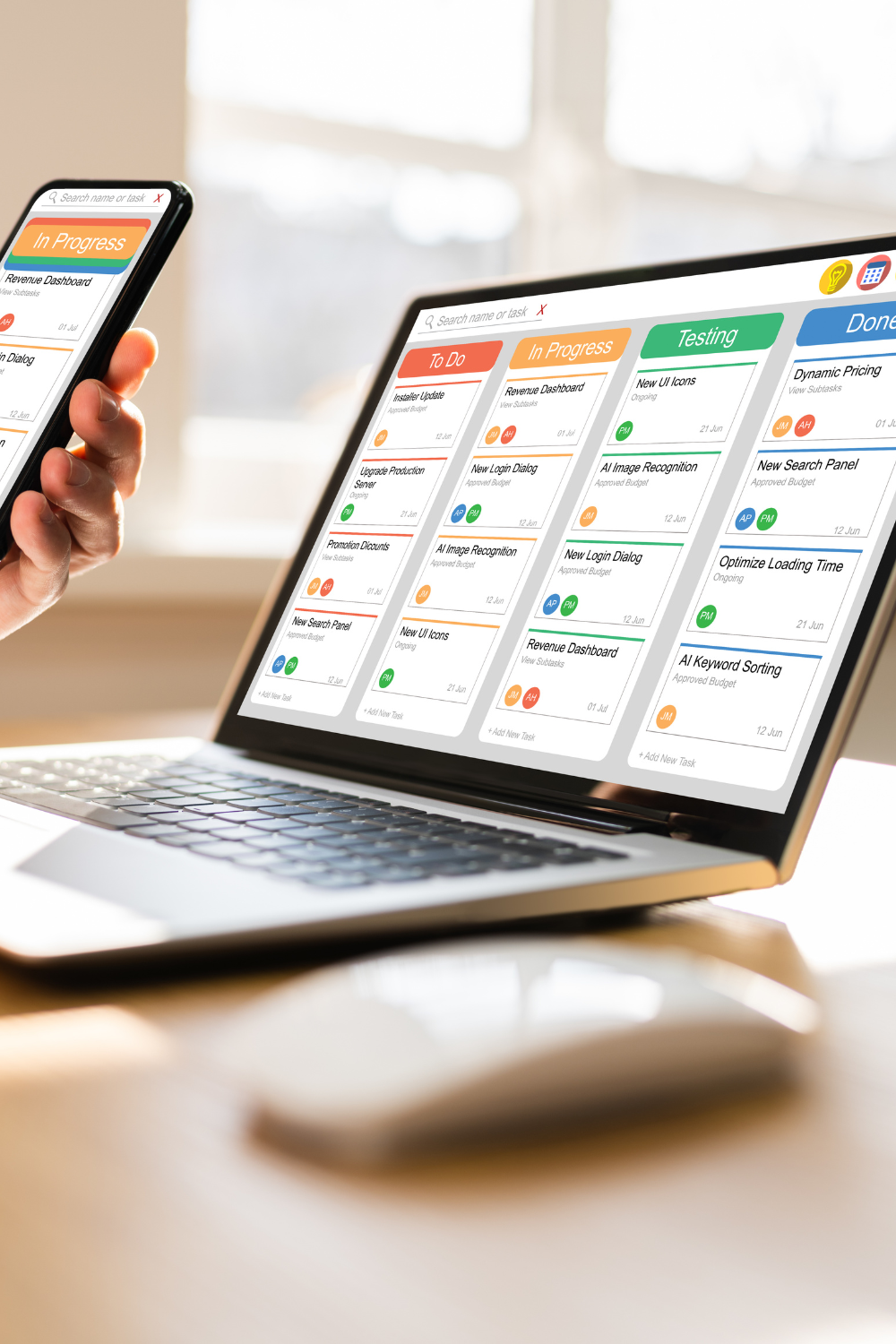How to define a counseling practice name that attracts and connects
Starting your own private counseling practice is both exciting and daunting. One of the biggest challenges is branding, especially when it comes to picking the right name. A name isn't just a label; it's the first impression potential clients will have of your practice.
Many therapists struggle with this step, unsure how to choose a name that not only stands out but also resonates deeply with their ideal clients.
In this post, we’ll dive into the importance of selecting a name that not only captures attention but also forms a genuine connection with those you aim to serve. You'll leave with a clear understanding of how to choose a name that reflects your practice's mission and values while appealing to your dream clients.
Before diving into the process of naming your counseling practice, it’s essential to understand that this name will become the cornerstone of your brand. It’s not just about sounding good; it’s about creating a name that aligns with your therapeutic approach and resonates with your target audience.
Affirmations can be powerful tools in this process. By affirming your intention to create a name that embodies the essence of your practice, you set a positive tone for this important task. Remember, the right name can help you attract clients who truly connect with your approach, so take your time and choose with care.
In case we haven’t met yet, I’m Natalia Maganda, a
website designer for therapists
specializing in helping ambitious life coaches and mental health professionals like you amplify their magic, gain visibility, and simplify their marketing efforts through strategic web design and content.
The importance of naming your private practice properly
Your practice name is the first touchpoint for potential clients. It’s what they’ll remember, share with others, and associate with the quality of care you provide. A well-chosen name can differentiate your practice in a crowded market, helping you to stand out among competitors. Moreover, it sets the tone for the client’s experience before they even walk through your door or visit your website.

Why you need a niche before you pick your name
Before choosing a name, it’s crucial to define your niche. Your niche represents the specific population or issues you specialize in, such as anxiety, trauma, or couples therapy. A clear niche allows you to select a name that speaks directly to your target audience. For example, if you specialize in working with young adults dealing with anxiety, your name could reflect themes of calm and empowerment.
How to pick your counseling practice name
Choosing a name involves several thoughtful steps:
Reflect on your mission and values
Consider what your practice stands for and the type of impact you want to make. Your name should reflect these core values.Identify your ideal client
Think about the clients you want to attract. What are their concerns, and what kind of name would resonate with them? Your name should speak to their needs and aspirations.Brainstorm keywords
Write down words that relate to your therapeutic approach, niche, and the emotions you want to evoke. Consider how these words can be combined or modified to create a unique name.Check for availability
Once you have a shortlist of names, ensure that they’re available as a domain name and aren’t already in use by another practice. Consistency across your website, social media, and business cards is crucial.Test it out
Share your top choices with trusted colleagues or friends for feedback. They can offer valuable insights on how the name is perceived.Visualize the name
Imagine how the name will look in your branding materials, such as your logo, website, and business cards. A visually appealing name can enhance your overall brand identity.
30 Intentional and heartwarming words to use in your counseling and therapy name
To inspire you, here are 30 words that can evoke warmth, trust, and connection in your practice name:
- Serenity
- Balance
- Hope
- Clarity
- Mindful
- Harmony
- Empower
- Insight
- Thrive
- Nurture
- Compass
- Journey
- Nourish
- Haven
- Bloom
- Soul
- Renew
- Oasis
- Elevate
- Reflect
- Peace
- Resilience
- Center
- Awaken
- Embrace
- Flourish
- Pathway
- Vitality
- Illuminate
- Calm
Use these words to explore name combinations, add adjectives or combine them with verbs until you find your perfect match!
30 creative counseling and therapy name ideas
- Heart & Mind Wellness
- Healing Path Therapy
- Tranquil Minds Counseling
- Soulful Balance Therapy
- Nurtured Growth Counseling
- Serenity Harbor Therapy
- Insightful Journeys Counseling
- Empowered Life Therapy
- Compassionate Healing Center
- Thrive Counseling Collective
- Calm Waters Therapy
- Inner Light Counseling
- Renewed Perspectives Therapy
- Mindful Horizons Counseling
- Heart-Centered Wellness
- Clarity Counseling & Wellness
- Safe Haven Therapy
- Flourish Therapy Group
- Resilient Roots Counseling
- Empowered Mind Counseling
- Hopeful Heart Therapy
- Grounded Growth Counseling
- New Beginnings Therapy
- Harmony Wellness Center
- Open Heart Counseling
- Lighthouse Therapy Solutions
- Radiant Path Counseling
- Balanced Life Therapy
- Peaceful Mind Counseling
- Vital Connections Therapy
I have picked a name for my private practice, now what?
Once you've selected the perfect name, it's time to bring your brand to life.
1. Build your brand
Create a logo, design business cards, and develop other branding materials that align with your new name.
2. Launch a website
A professional website is essential for establishing your online presence. It’s the virtual front door to your practice, so make sure it reflects your brand’s identity and values so that it can work as your sales person 24/7 converting traffic into aligned leads and sales.
3. Market your private practice
Start promoting your practice through social media, local directories, and networking events. Consistent branding across all platforms will help reinforce your name and attract your ideal clients.
Choosing the right name for your counseling practice is a critical step in building a successful private practice.
It should resonate with your target audience, reflect your values, and stand out from the crowd. If you’re ready to take the next step and create a cohesive brand that amplifies your practice, explore my
web design services tailored for therapists
. Don’t forget to download my free website planner guide to help you get started!
Related reads:
- The ultimate guide to branding your therapy and private practice
- 10 therapist business card ideas
- 40 therapist office ideas and tips to brand your calming space
- Stress free guide to social media for therapists
- 20 modern therapist logo ideas
- The best examples of modern therapist websites
- 40 Therapist headshots and photoshoot ideas
- How to write an engaging Psychology Today profile

* AI Disclosure: This content may contain sections generated with AI with the purpose of providing you with condensed helpful and relevant content, however all personal opinions are 100% human made as well as the blog post structure, outline and key takeaways.
* Affiliate Disclosure: Some of the links on www.nataliamaganda.com may contain affiliate links meaning that I will get a commission for recommending products at no extra cost to you.

hello! i'm natalia
Latina, web design expert for mental health professionals.
I help ambitious life coaches, therapists and holistic leaders amplify their magic, gain visibility, and simplify their marketing efforts through strategic web design and content.










